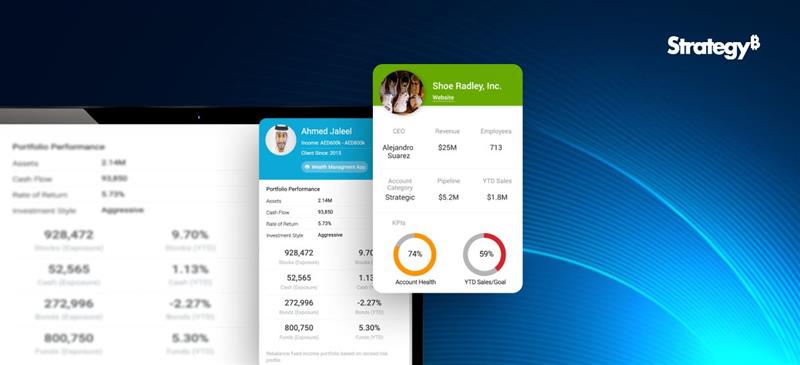Key Trends in GenAI: Be Always in the Know
The latest GenAI trends can take your business by storm, bringing significant transformations, improvements, and competitive advantages powerfully as follows:
1. Hyper-personalized marketing: Marketing That Knows You Better
Imagine a world where every ad you see feels made just for you. Generative AI is making that happen by analyzing tons of data to understand your likes and dislikes. Businesses can now tailor their campaigns so perfectly that it’s almost spooky—in a good way!
For example, AI can track your browsing history and suggest exactly the product you didn’t know you needed. It’s like having a personal shopper in your pocket. Plus, in education, platforms use AI to adapt lessons based on how well students do, making learning more effective and fun.
2. AI-driven automation: Getting Stuff Done Automatically
Let’s face it: no one likes spending hours on repetitive tasks. That’s where generative AI comes in. By 2025, it’s expected to automate up to 30% of business operations. Think about supply chain processes, scheduling, or managing employee requests—AI can handle everything.
For instance, companies are already using AI to speed up inventory management or even predict what products will be in demand. And customer service? AI-powered bots can answer questions faster and better than ever.
3. Conversational AI: Chatbots That Understand You
If you’ve ever had to deal with a clunky chatbot, you know how frustrating it can be. But conversational AI is leveling up. By 2028, virtual assistants and chatbots will feel more like talking to a helpful human than a robot. They’ll be able to understand complex questions, respond in natural language, and even handle customer complaints like pros.
Industries like healthcare and banking are already using this to make their customer service faster and more efficient. No more waiting on hold for hours!
4. Multi-Modal GenAI: AI That Gets All the Details
Generative AI is becoming more intelligent by combining different types of data—text, images, video, and even sound. This is called multi-modal AI, and it’s a big deal. Why? Because it can look at all these inputs together to give a complete picture.
For example, retail companies use this technology to analyze how customers behave online and in-store. It helps them precisely recommend what customers want, whether a new outfit or a better grocery deal.
5. AI & Healthcare: A Big Boost for Healthcare
Generative AI is saving lives. Seriously. It’s helping doctors create personalized treatment plans by analyzing patient data, medical history, and test results. AI is also speeding up research, making discovering new drugs and treatments easier.
More than 75% of healthcare companies are exploring AI. This means faster diagnoses, fewer errors, and more time for doctors to focus on their patients.
6. AI and Cybersecurity: Fighting Cybercrime Like a Pro
With the rise of digital threats, cybersecurity has become a top priority. Generative AI is stepping in to help by detecting suspicious activity before it becomes a full-blown attack. By 2027, AI-powered systems will drastically reduce false alarms, making it easier for companies to stay safe.
7. Ethics and Regulation: Keeping AI Ethical
As AI gets smarter, questions about how to use it responsibly are growing louder. Governments and companies are working to create rules that ensure AI is fair, safe, and doesn’t harm anyone. For example, the EU focuses on making AI ethical and transparent, while the U.S. takes a more flexible approach to encourage innovation.
If you’re a business owner, now’s the time to ensure your AI practices are legal and ethical.
8. Decentralized AI: Better Privacy
What if you could use AI without worrying about your data being misused? That’s what decentralized AI aims to do. Using blockchain technology keeps your data private and secure, giving you more control over its use. This is especially important in sensitive industries like healthcare and finance.
9. GenAI and Business: Bringing Big Wins
In the business world, the true potential of generative AI lies in fine-tuning models to meet specific needs. By 2025, enterprises will hold the reins of AI, leveraging it to drive innovation. Success won’t come from simply having vast amounts of data. It will hinge on adapting AI models to work seamlessly with that data.
Customized multimodal LLM fine-tuning and evaluation datasets customized to specific use cases enable precise model training. This empowers businesses to unlock the full value of their data and maintain a competitive edge with AI.
10. Open-source models: Pushing Boundaries
This year marks a breakthrough for open-source AI models like Meta’s Llama, Mistral, and Google’s Gemma, offering affordability and accessibility that empower developers and small businesses to innovate. Open-source models like “Llama 3” enable companies to integrate AI seamlessly, transforming businesses of all sizes into AI-driven operations.
Open-source fuels innovation and adoption, while closed-source models push AI’s boundaries—both are vital for progress.
11. Human-in-the-Loop (HITL): Trend
Human-in-the-loop (HITL) is a key trend, emphasizing the integration of human feedback into Generative AI. This ensures that AI models align with ethical standards, cultural nuances, and real-world needs. HITL improves AI accuracy and fosters collaboration between human expertise and AI.
By using HITL, organizations can harness the power of AI while maintaining control over outcomes. Our research also highlights how LLMs can generate inaccurate results without proper human oversight.
12. Agentic AI: Latest Addition
Agentic AI just popped up in mid-2024, the hottest topic for 2025. What’s so special about it? This new kind of AI can operate independently, making decisions and acting without needing us to guide it at every step. This is quite different from older AI, which only did what we told it to. These AI agents are especially useful in customer service, where they can handle tasks more efficiently, saving time and increasing productivity, or in finance, where they quickly analyze data and offer recommendations.
13. AI in the Creative Industry: Taking the Lead
Generative AI isn’t just about data and numbers—it’s getting creative too! It’s used to design clothes, create digital art, and even compose music. Imagine a fashion brand using AI to develop the next big trend or a filmmaker creating a blockbuster script with AI’s help.
It’s opening up endless media, entertainment, and advertising possibilities.
14. AI in Gaming: Immersive than Ever
If you’re a gamer, get ready for some serious fun. Generative AI creates immersive games by creating dynamic characters, realistic environments, and engaging storylines. Imagine playing a game where the plot changes based on your decisions—AI makes that possible.
Wrapping It Up: The AI Revolution Is Here
Generative AI is more than a tool; it’s a game-changer. From personalized shopping experiences to groundbreaking medical discoveries, it’s transforming every part of our lives.
The best part? We’re just getting started. As businesses and individuals, now’s the time to embrace this exciting technology. Whether you’re an entrepreneur, a tech enthusiast, or just someone curious about the future, there’s much to look forward to.
So, what are you waiting for? The AI revolution isn’t coming; it’s already here. Let’s make the most of it!




